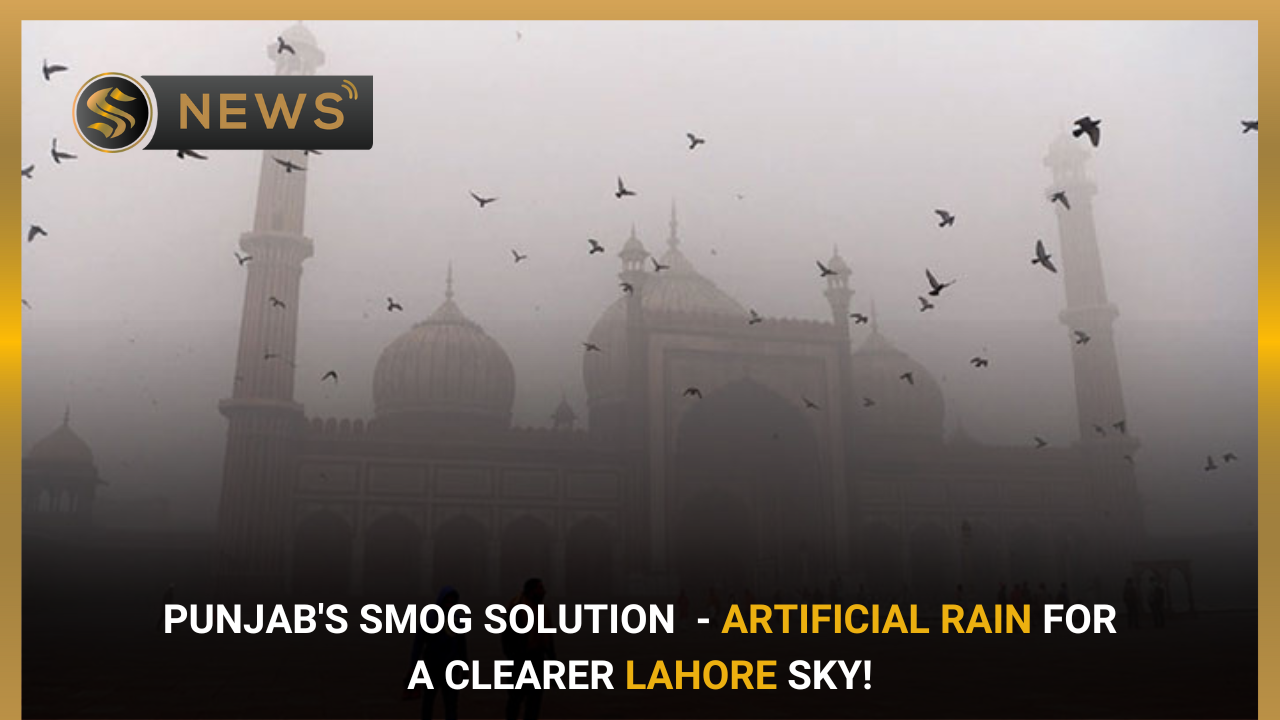
Share This Story, Choose Your Platform!
Punjab government plans artificial rain in Lahore amid smog
In the face of escalating smog levels in Lahore, the Punjab government is contemplating a strategy to tackle the persistent issue of artificial rain, also known as cloud seeding. This weather modification technique involves the dispersal of substances into the air to encourage cloud condensation and precipitation. The move comes as Lahore recently reclaimed the unenviable top spot in global pollution rankings, prompting urgent action to address the city’s deteriorating air quality.
Exploring Artificial Rain as a Smog Solution
Punjab’s interim Environment Minister, Bilal Iqbal, chaired a crucial meeting to discuss the feasibility of artificial rain as a solution to the ongoing smog crisis. This innovative approach aims to leverage cloud seeding technology, a process involving the dispersal of substances like silver or potassium iodide into the air. These substances act as cloud condensation nuclei, encouraging the formation of larger water droplets that eventually fall as rain.
Meeting Highlights and Government Initiatives
During the meeting, Minister Bilal Iqbal instructed the formation of a working group tasked with supervising the artificial rain initiative. This group is expected to finalize its recommendations by November 28 or 29. The minister emphasized the importance of cloud presence for the successful execution of artificial rain and underscored the need for thorough evaluation before implementation.
Caretaker Education Minister Mansoor Qadir, also present at the meeting, assured that the working group would meticulously analyze all aspects of the artificial rain initiative. The recommendations derived from this analysis will then be submitted to the chief minister for final approval.
You May Also Read
Murree & Kotli Sattian Declared Forest Reserves By RDA
International Context
The Punjab government’s consideration of artificial rain aligns with global efforts to combat severe air pollution. Notably, Indian scientists recently announced plans to seed clouds in New Delhi to trigger heavy rain as a means of addressing the alarming smog levels in the world’s most polluted capital.
Understanding Cloud Seeding
Cloud seeding, a form of weather modification, involves altering the microphysical processes within clouds to change the amount or type of precipitation. Substances are dispersed into the air to serve as cloud condensation or ice nuclei. This practice is particularly common in China, where induced rain is used to mitigate dangerously high levels of air pollution.
Conclusion
As Lahore grapples with hazardous smog levels, the Punjab government’s consideration of artificial rain reflects a commitment to exploring innovative solutions. Cloud seeding, if successfully implemented, could provide much-needed relief to residents battling the adverse health effects of prolonged exposure to polluted air. The formation of a dedicated working group underscores the government’s proactive approach to addressing the smog crisis and signals a potential turning point in the quest for cleaner air in Lahore.




